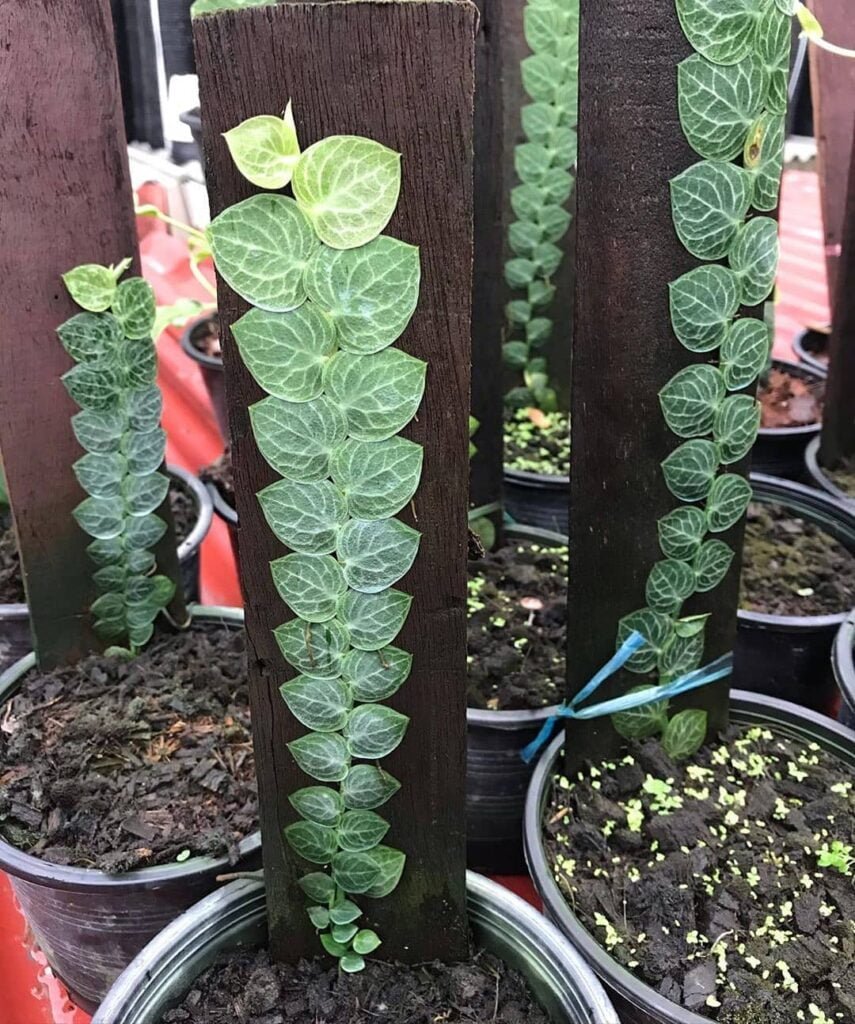Do you want to enliven the inside of your house with green plants but don’t know how to do so?Look no further! Here, we are going to unravel the thrilling realm of the shingle plants species Rhaphidophora hayi and R. cryptantha, and discover how these beauties can be cared for without a sweat. The aim of this in-depth article is to inspire whether you are an experienced plant expert or a newbie, by the end of it you will have all you need to take care of these lovely green creatures and watch them blossom in your home.
What Are Shingle Plants?
The aroids named Shingle Plants (Rhaphidophora hayi and R. cryptantha) belong to the Araceae family. These plants are plants endemic to tropical regions which are loved for their variegated leaves or flowers and non-demanding nature. Woods named their leaves due to the manner in which they curl over each other and stick to surfaces making them look like shingles on a roof.


Choosing the Right Location:
It is necessary to choose a suitable location first for the shingle plant before setting it up to make the plant grow successfully. These plants prefer the bright, indirect light, and so they plant indoors where there is the much of the sunlight. Placing them in direct sunlight is not advisable because their leaves may wilt on account of the heat. Moreover, make sure to provide good air circulation around the plant to avoid environmental issues due to excessive moisture.
Weeping Alaskan Cedar: A Simple Guide to Growing this Beautiful Evergreen Tree
Watering and Humidity:
With respect to watering shingle plants, consistency says much. These plants like the soil to be slightly wet but can’t bear the ground to be waterlogged. Try to allow the top inch of soil to dry out between waterings and use room temperature water for the job of watering to prevent shocking the root system of your plants. Moreover, the plants grow well in a high humidity environment, so keep a humidifier or put a flatware tray filled with pebbles free from water underneath the plant to increase the humidity level.
Soil and Potting:
Selecting the no correct soil mixture can deteriorate the health of your shingle plant. Try an airy potting mix that retains moisture without soaking the soil. A combination of peat moss, perlite, and orchid bark is a great substrate for for shingle plants. When repotting, make sure you select pot that has enough room for root growth and that has got enough draining holes to prevent water buildup.
Fertilizing Routine:
For your shingle plant to stay vibrant and thriving, let it in your gardening routine to fertilize your plants as part of your maintenance. Apply the feeding mixture in dosage of 1/2 of the recommended strength during the active growing season, usually in spring and summer; repeat this at 4 to 6 weeks intervals. While fertilizing during the dormant winter season when growth slows down could be an option.
Sago Palm Plants : How to Easily Grow and Care
Pruning and Maintenance:
Regular pruning is crucial to maintain the lush appearance of shingle plant and to promote growth vigor. Be quick to remove any yellow or damaged leaves once you notice them using sharp clean pruners or scissors. Furthermore, prune to keep unshapely growth in check for a more bushy look. Make it a habit to wipe the dust and dirt from the plant leaves with a damp cloth regularly so that they will be able to photosynthesize efficiently.
Pest and Disease Management:
It’s worth noting that shingle plants are pretty hardy, but they’re still susceptible to pests. Spider mites, mealybugs and aphids are the ones that will take a toll on them. Look over your plant every now and then for any pest signs, e.g., webs, sticky residues, or tiny insects. If the pest is found, try to treat the substrate with insecticidal soap or neem oil, making sure that the leaves should be covered both on the top and bottom. Besides, practicing good hygiene and not watering too much are the best ways to prevent fungal diseases.
Russian Sage: A Guide to Planting, Growing, and Care
Propagation:
Shingle plants are one of the joys of owning as the owners of them have the ability to propagate them and share their beauty with others. These plants can be incremented simply through the use of stem cuttings or air layering. In order to propagate by stem cuttings, you just have to clip a healthy stem just under a node and put the chunk in water or moist potting mix until roots grow. To do an air layering, choose a mature stem, make a small cut in this stem, and wrap it in sphagnum moss until roots develop. Having developed the roots, transfer the cutting into its own pot and ensure to grow into a new plant.
In summary, looking over the point and shoot plant, Rhaphidophora hayi and the shingle plant, R. cryptantha can be an exciting experience for all gardening lovers. Applying all these strategies outlined in this guide will put you in the right shoes to care for your indoor garden like tender mother. Individual steps towards the right location selection, maintenance, and propagation, each of them is important to exhibit the longevity and nice appearance of your shingle plants. And don’t be afraid to bring these green monsters to add another collection item for your shingle plants family!
Pingback: Begonia Lucerna Care – Keeping Your Angel Wing Begonias Thriving -